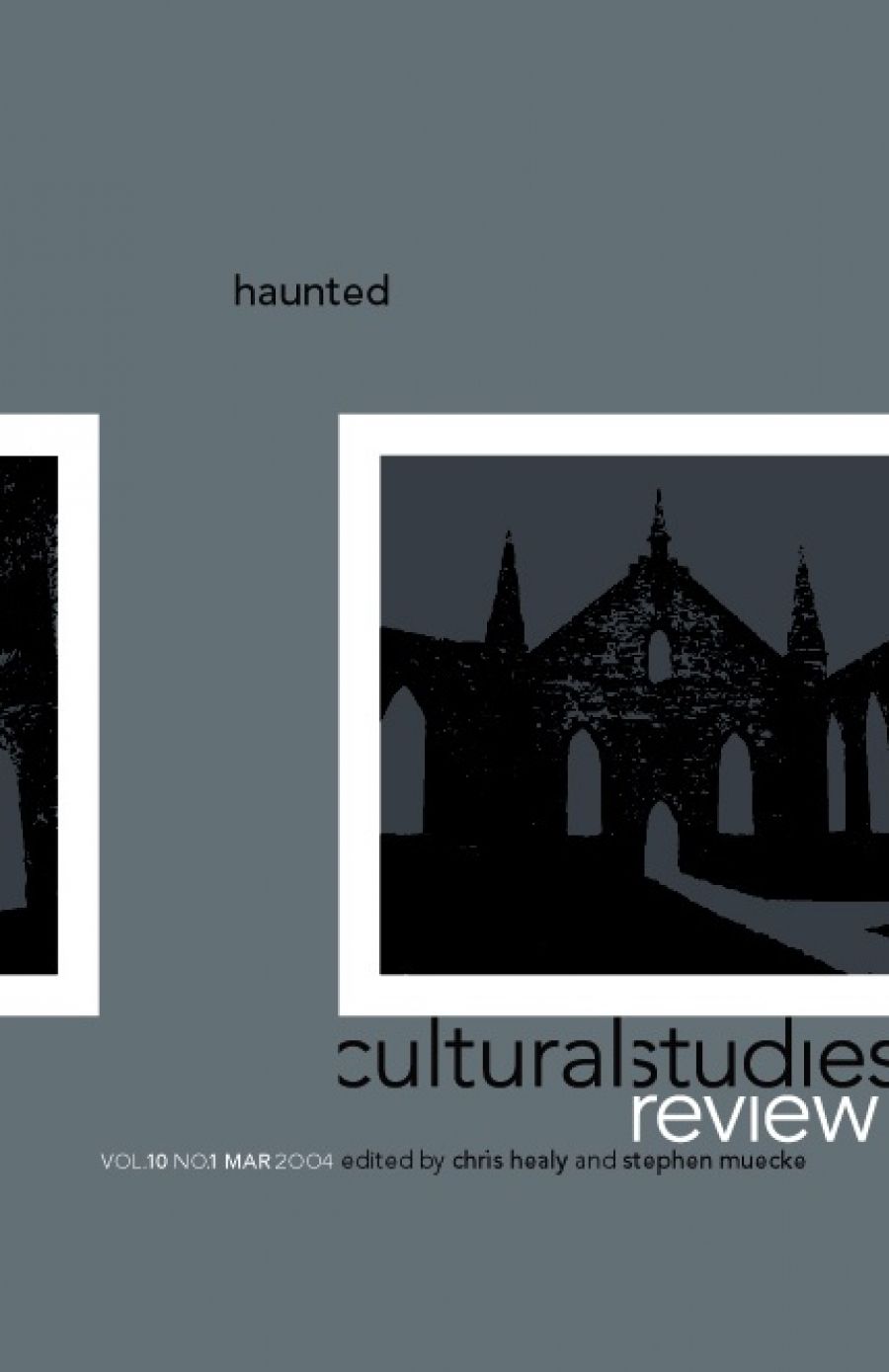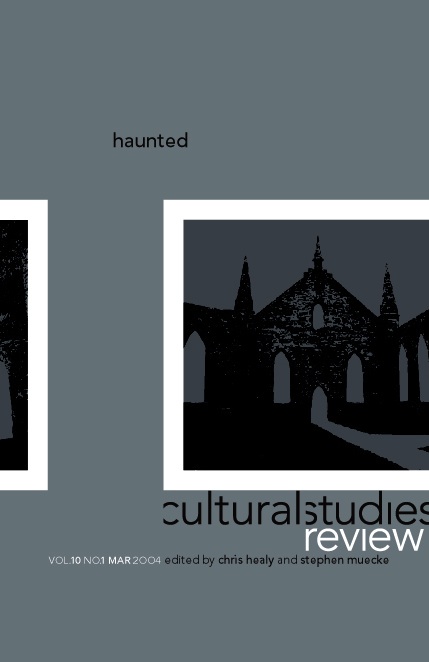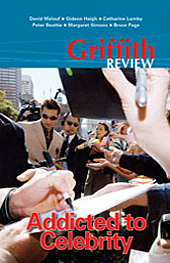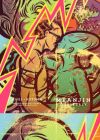
- Free Article: No
- Contents Category: Literary Studies
- Review Article: Yes
- Article Title: Get Interpellated
- Online Only: No
- Custom Highlight Text:
In the latter decades of the twentieth century, the idea of ‘culture’ was radically democratised. The meaning of the word shifted away from the old, exclusive definition – culture as ‘the best which has been thought and said in the world’, as Matthew Arnold put it in 1869 – and became a more inclusive concept that took in popular forms. We have become used to the idea that there is no clear dividing line between high and low. There is something liberating about having the freedom to treat popular cultural forms as the objects of serious attention. Even Meanjin, the most venerable and literary of these three journals, can publish an essay – an interesting. well-written and intelligent essay – on a pair of television soaps without it seeming out of place alongside more traditional subjects. But while some barriers fall, others go up. Cultural studies, as the academic discipline that has sprung up to exploit this relatively new freedom, faces the question of whether it should direct itself toward a general, non-academic audience or police the distinction between ‘serious’ academic writing and the kind of analysis that might be found in the mainstream media.
- Book 1 Title: Cultural Studies Review
- Book 1 Subtitle: Haunted vol. 10, no. 2
- Book 1 Biblio: $29.95pb, 240pp
- Book 1 Cover Small (400 x 600):

- Book 1 Cover (800 x 1200):

- Book 2 Title: Griffith Review 5
- Book 2 Subtitle: Addicted to celebrity
- Book 2 Biblio: ABC Books, $16.95pb, 268pp
- Book 2 Cover Small (400 x 600):

- Book 2 Cover (800 x 1200):

- Book 3 Title: Meanjin
- Book 3 Subtitle: Australia's Britain vol. 63, no.3
- Book 3 Biblio: $22.95pb, 236pp
- Book 3 Cover Small (400 x 600):

- Book 3 Cover (800 x 1200):

Roughly speaking, the Griffith Review and the Cultural Studies Review fall on either side of this question. In the latter, we find Graeme Turner warning that the ‘danger for the cultural studies academic who wants to write for [the] crossover market is that they simply write high-end cultural journalism’. The Griffith Review, however, was conceived with the intention of building ‘a bridge between literary, academic and journalistic writing and the reading and thinking public’; academic contributors rub shoulders with some of Australia’s most seasoned authors and journalists. The Cultural Studies Review, in contrast, leans toward the kind of hard-nosed theorists who like to subvert the dominant paradigm every morning before breakfast. Some of them are prepared to go to great lengths to make outsiders feel unwelcome. Forget the sound of one hand clapping, meditate on this, from Alan Cholodenko:
While introjection is of the order of presence, representation, the subject, the spirit, the ontological, incorporation is of the order of the simulacrum, the object, the spectre, the hauntological. Its ‘in-’ is not merely the banal ‘in-’ of the inside as a fullness of presence of in-trojection but the fatal, radical ‘in-’ as the irreducibly ‘in-’ between, the ‘in-’ between as itself the secret: what would be for Derrida the outside as the inside of the inside or of the outside and the inside as the outside of the outside or of the inside.
The final flourish is almost worthy of Gertrude Stein. Except Stein had a sense of humour.
Now, regardless of Derrida’s merits as a thinker, adopting him as a model for writing prose in English is an act of lunacy. Turner alludes to ‘the familiar criticisms that cultural studies academics write incomprehensible prose that only the cognoscenti can understand’. The evidence suggests, however, that the baleful influence of academese is not so clearly delineated. The above is an extreme and unrepresentative example. Most of the writing isn’t incomprehensible, and much of it is fine. But it is often artless, and, in a few cases, potentially interesting analysis is rendered powerfully soporific, seemingly because of an anxiety to demonstrate allegiance to the academic side of the equation. Apparently, a tin ear is a badge of membership. No one wants to write something that could be mistaken for mere ‘high-end cultural journalism’. But it can’t be a good sign that, even when contributors are trying to sound breezy and accessible, they say dopey things like ‘I was interpellated to think through a new frame’. Or the fact that they stumble over simple concepts, such as saying that asylum seekers suffer from ‘a deficit of national belonging’ or describing a woman in a ‘situation as a mother carrying a foetus’. I believe the technical term is ‘pregnant’.
The fifth issue of the Griffith Review boasts an impressive selection of prominent writers, including David Malouf, Gideon Haigh, Margaret Simons and Raimond Gaita. Its populist orientation is also reflected in its choice of theme. which strikes me as a little dubious. ‘[W]e have all become,’ writes editor Julianne Schultz, ‘addicted to celebrity.’ What, all of us? Addicted? I don’t think so. And while we are on the subject of academese, can we have a moratorium on awful puns? ‘When it comes to being noticed,’ Schultz continues, ‘we no longer live in a meritocracy, more a mediocre “mediacracy”.’ Incredibly, ‘mediacracy’ is not even the worst example in the Griffith Review. That honour goes to ‘selfebrity’, which has been coined by Mark Cherry and Ruth Wajnryb to describe the phenomenon of celebrities spouting a lot of self-regarding twaddle.
The Griffith Review is nevertheless an interesting and diverse anthology that successfully occupies the middle ground between academia and mainstream journalism. It succeeds partly because of the high calibre of its contributors, but also because Schultz is wise enough to treat her theme loosely. It may not have the same kind of appeal, but ‘the media’ is probably more accurate as a generalisation about the range of issues covered here. Articles on the changing face of journalism, the shifting sands of the case for war in Iraq, changes to Australia’s defamation laws and truth in politics don’t quite fit the ‘celebrity’ concept, but do provide the journal with real substance and a distinct political edge.
Sailing calmly on its way, with all the assurance that comes from being a perennial feature of the Australian cultural landscape, is Meanjin. Though its scope is broad – history art criticism, cinema, television, memoir – it remains ‘literary’ in its orientation both in its dedication to fiction and poetry, and in the overall quality of the writing. Poetry, in particular, makes a strong showing in this edition. There is a suite of four poems by Peter Porter, as well as contribution from Les Murray and John Kinsella, among others.
Meanjin’s theme – ‘Australia’s Britain’ – is perhaps a little hoary but it is one that will always have relevance to an Anglophone country with a colonial past. The question of our British roots is also topical thanks to David Malouf’s recent Quarterly Essay, Made in England, which is the subject of an extended review. Compared to the other two journals, Meanjin sticks closely to its theme and demonstrates how effective a strategy this can be. Whether intentional or not, many articles have a personal angle, and the range of experiences, observations and opinions provide a real sense of depth.
But while Australia’s view of the cultural legacy of our British past has matured and deepened, some things never change. Nicola Walker, the Australasian editor of the Times Literary Supplement, notes that ‘Australians have had to grow used to a rather one-way literary conversation with the rest of the world’, and several contributors provide evidence that condescension toward colonials is still alive and well in the ‘motherland’. Many English people retain a view of Australian culture that remains infantile, barely extending beyond Neighbours, the fact that we regularly flog them at cricket, and Monty Python’s ‘Bruces’ sketch. The habit of imperial arrogance would appear to be harder to shake off than the empire itself.
Each of these publications has something to recommend it. Their individual characteristics might be very different, but collectively they reflect a healthy level of ongoing cultural discussion. So grab a copy and get interpellated to think through a new frame.


Comments powered by CComment